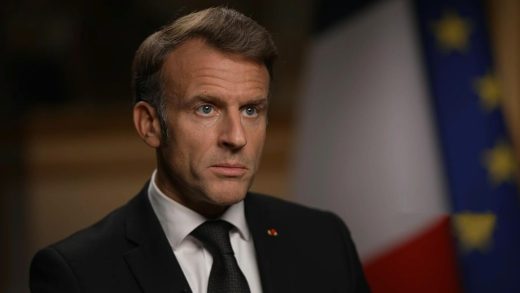Amid a very busy year — a stunning trade and max contract extension, playoffs in a new city and EuroBasket competition — Luka Doncic achieved an under-the-radar accomplishment in 2025. Thanks to a host of happy Los Angeles Lakers fans celebrating their new star, Doncic had the highest-selling jersey in the NBA, breaking an 11-year run where LeBron James or Stephen Curry’s jersey sales led the league.
A decade removed from the start of Curry’s and James’ Finals clashes, the NBA is still largely defined by those living legends, now 37 and 40 years old, respectively. It’s not just the jersey sales, though they ranked second and third, respectively, behind Doncic.
James and Curry also ranked first and second in 2024-25 as the most-viewed players on the NBA’s social media platforms, and they’re first and second in Instagram followers. They drive more narrative conversations and TV ratings than any other stars: They were the chief protagonists and most scintillating players during Team USA’s gold medal triumph at the Paris Olympics in 2024.
The obvious question is who comes next. For decades, the NBA has been blessed with a natural passing of the baton, as the face of the league mantle shifted from Magic Johnson and Larry Bird to Michael Jordan; from Jordan to Kobe Bryant; from Bryant to James and, soon after, Curry.
Yet there is no clear candidate to follow James and Curry. This isn’t an unusual situation, necessarily; plenty of ostensible “next Jordans” failed to reach that level before Bryant came close. But it’s a testament to how difficult it is to predict who will emerge as the next face of the NBA before it happens; there is no one set path for each face to follow, but rather a variety of different routes to the top of the heap.
Let’s examine those possible paths, and in doing so, identify the active players most suited to follow James, Curry and other past faces. Talent and on-court achievements matter — every previous representative is an all-time great — but so do a host of other soft factors that influence popularity and impact. Those elements needed to combine in the right way to produce past faces of the NBA. Could they do so again for current stars angling to succeed Curry and James?

Path 1: ‘The Chosen One’
James’ ascension to face of the league was preordained, from the moment the then-17-year-old appeared on a Sports Illustrated cover next to the words “The Chosen One.” James has surpassed even the loftiest expectations, and he followed a consistent, methodical trajectory to the top spot in the player hierarchy: No. 1 draft pick to Rookie of the Year to second-year All-Star to best player on a Finals team to Olympic gold medalist to MVP to celebrated free agent to champion.
At no point during that run did James deviate from his face of the league path. Even before he won a title, more than 13 million people tuned in to watch James’ “Decision,” when he announced his move to Miami in 2010.
The active analogue: Entering the 2023 draft, Victor Wembanyama was touted as the best NBA prospect since LeBron 20 years earlier, and he’s given no indications otherwise through two seasons.
Like James, Wembanyama’s jaw-dropping skills, indefatigable work ethic and incredible basketball mind make him suited for the role. His off-the-court interests could help his fame transcend San Antonio’s relatively small market, much as James did with Cleveland. When ESPN’s Tim Bontemps surveyed 20 coaches, scouts and executives last month, 16 predicted Wembanyama will be the NBA’s best player in 2030.
There are a couple of obstacles that could block Wembanyama’s seemingly straightforward path to follow in James’ footsteps, though.
The first is Wembanyama’s position. Arguably, no big man has been the face of the league since Bill Russell and Wilt Chamberlain in the 1960s. (Depending on your definition, perhaps Shaquille O’Neal snuck in for a brief period between Jordan and Bryant.) Even all-time greats such as Kareem Abdul-Jabbar and Tim Duncan couldn’t overcome that positional bias, perhaps because it’s more difficult for fans to relate to 7-footers than to perimeter players.
Wembanyama also will make history as the first international player to become the face of the league.
The consensus top four players in the NBA — Nikola Jokic, Shai Gilgeous-Alexander, Doncic and Giannis Antetokounmpo — are all foreign-born and haven’t seized the crown yet, and none look like slam dunk successors to Curry and James. Antetokounmpo might be the closest, as the leading All-Star vote getter in the past two seasons — either James, Bryant or Curry led for 11 seasons in a row before Antetokounmpo — but he’s already 30 years old and running out of time to stake a true claim.
Still, Wembanyama has enough in his favor that he’s probably the top choice to be the NBA’s next face. Even his competition agrees. Last season, a reporter asked Anthony Edwards if he considered himself a candidate for the position.
“No, not really,” Edwards said. “That’s what they got Wemby for.”
Path 2: The electric shooting guard
Nothing captures the imagination quite like an athletic 2-guard who can score in a variety of ways: Contested jumpers, acrobatic layups, ferocious dunks. Because of Jordan, this is likely the player archetype most associated with the face of the league designation.
For years during Jordan’s career, people wondered who his successor would be. And then Bryant arrived, doing his best Jordan imitation, and carried the mantle for another decade-plus after Jordan left the Bulls.
The active analogue: Despite his protestations, Edwards is the natural choice to follow this path, as a charismatic, braggadocious shooting guard with immense talent and competitive zeal. Few active players can score in more diverse ways than Edwards, who led the NBA in made 3-pointers last season and has never met an opposing 7-footer he didn’t want to posterize.
And if an international face doesn’t rise to the occasion, then Edwards might be the best option available, though he has faced on-the-court controversies. In Bontemps’ survey, Edwards received 11 of 20 votes for the best American player in 2030.
Other potential candidates in this mold abound because the sport is flush with high-octane guards. The possibilities even filter to college: Could the next face of the NBA be Kansas’s Darryn Peterson, the top prospect in the 2026 draft, who has already drawn plenty of Kobe comparisons as he enters his freshman year?
One final candidate worth discussing is more outside the box but still fits the pattern. Bryant was a first-time All-NBA honoree in his third season, then an All-Defensive player and the second-best player on a championship team in his fourth. Even though he took the backseat to MVP O’Neal on the Lakers for a time, he grabbed the face crown and didn’t let go.
There’s an active player who just accomplished all of those feats — All-NBA, All-Defensive Team, second-best player on a champion — in his third season. It’s not likely that Oklahoma City Thunder wing Jalen Williams will emerge as the face of the NBA in the years to come, but it’s not impossible, either. He’s following a proven blueprint, and he’s only improving for a potential dynastic champion. In June, Williams became the youngest player since Magic Johnson to score 40 points in a Finals win.
Path 3: The leading Laker
There’s no statistical marker for face of the league, no physical award or Basketball Reference designation; rather, paraphrasing former Supreme Court Justice Potter Stewart — discussing a very different subject matter — you know it when you see it.
Given such subjective criteria, context matters; where a star plays, and in what nationally televised games and showcase events, can be almost as important as skill and statistical accomplishments. That’s why so many of the historical faces of the league have been mononymous Lakers, including Magic, Kobe and LeBron. Even the literal face of the NBA — Jerry West, “the Logo” — starred for the franchise with the most glitz and glamor and Finals appearances.
The active analogue: James’ successor as the leading Laker might be his successor as the face of the league, too. Doncic faces the same international hurdle as Wembanyama, but he’s otherwise a perfect candidate. He’s the right age (26), clutch, a statistical marvel and highlight machine.
Doncic made a Finals trip in Dallas, but he might be better positioned for true top-tier superstardom in Los Angeles if he can help the Lakers win their 18th title. After all, it wasn’t until Doncic joined the Lakers that he finally broke the James/Curry stranglehold on the top spot for jersey sales.
Path 4: The unexpected game changer
Curry is the most out-of-nowhere face the NBA has ever had. The skinny guard captivated with a March Madness run in college, but nagging injuries and a lack of playoff appearances meant he didn’t fully emerge for years in the NBA. He didn’t even make an All-Star team until his age-25 season — then won the championship and MVP trophy the following year.
The active analogue: Curry’s exact path is impossible to duplicate. But let’s try. We need to identify a player who captivated the masses in college, but who hasn’t had much sustained NBA success yet because of injuries and zero playoff appearances. He’s a unique force when healthy, though. And ideally, he’s also heading into his age-25 season.
There is one player who meets all of those criteria. And while the hype for Zion Williamson has diminished since he was a sensation at Duke in 2018-19, it’s still simmering rather than completely gone. Despite all the stops and starts, he looks great in the 2025-26 preseason.
If not Williamson, another outside-the-box candidate is LaMelo Ball, an injury-prone guard with incredible shooting range and highlight reels. One quality of the face of the league is a near universal fandom, and independent of geography. Jordan was immensely popular far outside Chicago, and just about every kid chucking 3s at any playground across the country worships Curry.
That’s an advantage for Ball, a favorite of the increasing number of fans who follow basketball through social media and highlights. He’s the youngest of 13 active NBA players with at least 10 million Instagram followers. (The second youngest is Doncic; the third youngest is Lonzo Ball.)
It might seem shocking to suggest that Williamson or Ball — two presently underachieving players on bad teams — might one day command the same attention as Curry. But it would have been equally shocking if NBA observers circa 2012 learned that Curry would develop into a four-time champion, two-time MVP and indisputable face of the league.
Path 5: The natural rivals
What’s better than one face of the league? Two faces who can oppose each other on opening night, during Christmas showcases and in high-stakes playoff clashes. Curry’s constant meetings with James helped boost his Q score, and the rivalry between Bird and Johnson — which began in college and continued through nearly a decade of Finals meetings — is the stuff of books and documentary films.
Ultimately, the NBA tells a story. And natural foils are a tried-and-true storytelling tactic. Look toward opening night of the 2025-26 NBA season, when James’ Lakers will face Curry’s Warriors on the national stage yet again.
The active analogue: As difficult as it is to predict which individual players will blossom into superstars, it’s even more difficult to predict what rivalries will materialize in the years to come. The ideal scenario is that one develops organically, as charismatic stars meet in the playoffs year after year.
For instance, Gilgeous-Alexander hasn’t parlayed his extraordinary 2024-25 success into any face of the league talk yet. Still, he could rise further alongside either Doncic or Edwards, whom he’s already faced in one playoff series apiece.
Rivalries could also launch a potential face into the real thing. Take for instance if former No. 1 picks Cooper Flagg and Wembanyama develop a rivalry as the two have the potential to battle not only in a highly competitive conference but in the Olympics as well. Or perhaps Flagg will go head-to-head with Doncic, given the clear opening for a Mavericks-Lakers rivalry in the years to come.
In Bontemps’ survey, Flagg received five votes as the best American player in 2030, placing him second to Edwards in that category. The most recent No. 1 pick has yet to play a single NBA game that counts — but along with Wembanyama, Doncic, Edwards and others, he’s already one of the leading candidates to ascend to the most important social position in the NBA.


